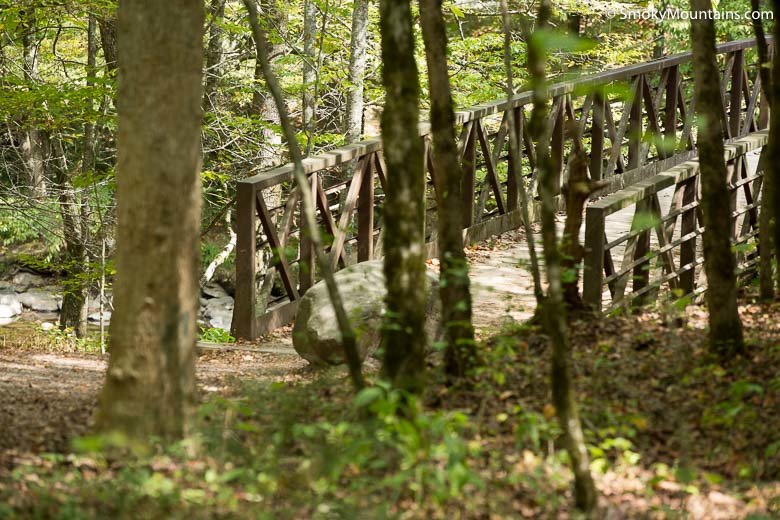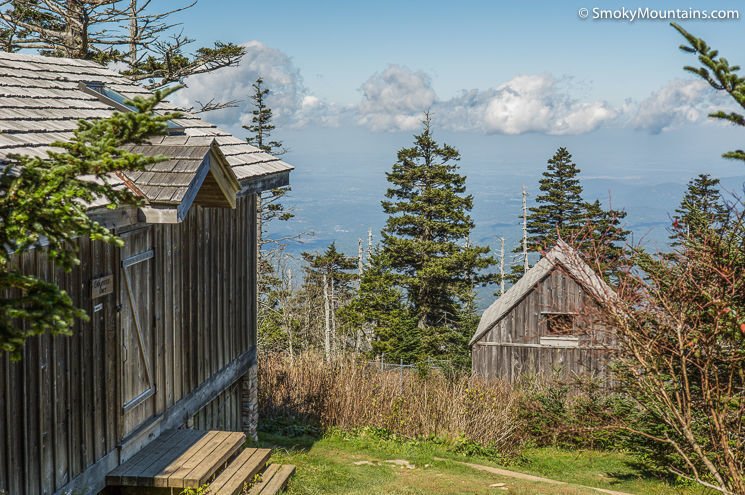The busiest gateway to the most-visited national park in the country, Gatlinburg, TN claims a long history stretching back thousands of years, though the community itself is “only” a bit more than two centuries old. Here’s a snapshot overview of that backstory, which has encompassed quite a few distinct chapters: from early Euro-American settlement to the logging boom to the creation of Great Smoky Mountains National Park.
If you have any further questions about renting a cabin in this historic town, feel free to let us know how we can help.
Gatlinburg History
Deep Indigenous Roots
American Indian people inhabited the Gatlinburg area—nooked into the northern flanks of the Great Smokies in the valley of the West Prong of the Little Pigeon River—since the distant past. A major indigenous trace used (among others) by the Cherokee passed through the area and crested the Great Smoky Mountain divide at Indian Gap, connecting with the Oconaluftee drainage on the other side.
Euro-American Settlement
The first permanent white settlers in what became Gatlinburg were Martha Jane Huskey Ogle and some of her family in about 1807. Martha was the widow of William Ogle, who’d scouted out a spot here—at the confluence of the Little Pigeon and Baskins Creek, specifically—as a place to settle and felled logs for a home but who died before being able to move there. The timber he cut, though, was used by the Ogles to build their cabin, and—quite remarkably—the structure still stands: You can find it at the Gatlinburg Welcome Center.
Other settlers followed the Ogles to what was then called White Oak Flats on account of (wait for it) its abundant white oaks. Many White Oak Flats homesteaders were veterans of the Revolutionary War or the War of 1812 and were taking advantage of the 50 acres of land rewarded to them for their military service.
Gatlinburg’s Controversial Namesake: Where Did the Name Originate?
The name “Gatlinburg” was applied in 1856 when a new post office opened in the general store of one Radford C. Gatlin, who’d moved to the community only two years before. Gatlin was by all accounts a rather difficult character, and he was basically run out of town in fairly short order; despite his brief residency, he obviously left his mark.
Gatlinburg in the Civil War
During the Civil War, many residents of the Smoky Mountain people stayed on the neutral side of things, though the sentiment in Gatlinburg was mostly pro-Union. Nonetheless, Confederate forces under Colonel William Holland Thomas eventually came to occupy the town to safeguard saltpeter mines in the Smoky Mountain hinterland. This prompted a march on Gatlinburg by Union “bluecoats”: the only organized fight of the War Between the States contested here, though there were low-grade clashes in the vicinity.
Logging & the Creation of Great Smoky Mountains National Park
Logging boomed in the Great Smokies and elsewhere in the Southern Appalachians in the late 1800s and early 1900s, and Andrew Jackson Huff established a sawmill in Gatlinburg in 1900. (Incidentally, Andrew Jackson Huff’s son, Jack, opened LeConte Lodge atop Mount LeConte—the third-highest peak in the Great Smokies—in the mid-1920s.)
The most pivotal era for Gatlinburg came with the push to establish a national park in the Great Smokies, an idea advocated by such well-known local figures as Horace Kephart. Rampant lumbering inspired a movement to save some of the highland forests before they were clear-cut.
Unlike most of the national parks established previously, the bulk of which was located in the American West on acreage already owned by the federal government, the Great Smoky Mountains National Park was cobbled together from land owned by timber and pulpwood companies, farmers, and other private entities. An exceedingly complicated process that involved massive local fundraising saw these holdings transferred to federal ownership and the park was finally established in 1934. (While much of the area’s forests are second-growth, the park’s creation came in time to preserve some significant old-growth acreage: among the most extensive in the eastern U.S.)
Many of the Smoky Mountain settlers uprooted with the park’s establishment resettled in Gatlinburg, whose citizens today still include descendants even of the Ogles and other first-wave pioneers. Some of the Civilian Conservation Corps workers who built trails and structures for the new national park also eventually made their homes in Gatlinburg.
Tourism to Gatlinburg based around the Great Smokies had begun by the early 20th century, but visitation significantly increased with the opening of the Great Smoky Mountains National Park. Its significance as a park gateway heralded a dramatic economic transformation in Gatlinburg, through which a majority of park visitors—who numbered more than 11 million in 2016—pass through.
The Pi Beta Phi Settlement School & the Arrowmont School of Arts & Crafts

Photo Credit by @maeb.bby on Instagram
Another important facet of Gatlinburg’s history is education. A national women’s group called Pi Beta Phi which was devoted to assisting the needy founded the first school in town in 1912. The Pi Beta Phi Settlement School eventually evolved into the Arrowmont School of Arts and Crafts, established to market local Appalachian crafts and which today serves as an internationally known arts center.
Modern Landmarks
Having served as a high-profile tourism portal since the first half of the 20th century, Gatlinburg comes chockablock with family attractions, many of them long-running ones of multigenerational ownership.
Tennessee’s only ski resort resides in Gatlinburg: Ober Gatlinburg, which kicked off back in 1962 and is particularly famed for its aerial tramway. The pinnacle of the city, the Gatlinburg Space Needle, was built in 1969 and continues to offer one heck of a panoramic view of the town and its Smoky Mountain backdrop. Then there are Ripley’s facilities—Ripley’s Believe It or Not!, Ripley’s Aquarium of the Smokies, Ripley’s Moving Theater, and more—and such entertainment venues as Sweet Fanny Adams Theatre & Music Hall, a fixture of town since 1977.
Why is Gatlinburg So Famous?
Gatlinburg is an unbelievably beautiful and quaint town nestled in the endless Smoky Mountains. Not only does it have a lengthy history, but it simply has so much to do that makes it the ideal town to make unforgettable memories. Throw in tons of shopping and dining, and it’s no surprise Gatlinburg’s really one of the great tourist towns in America—and a truly iconic launchpad for explorations of Great Smoky Mountains National Park.










